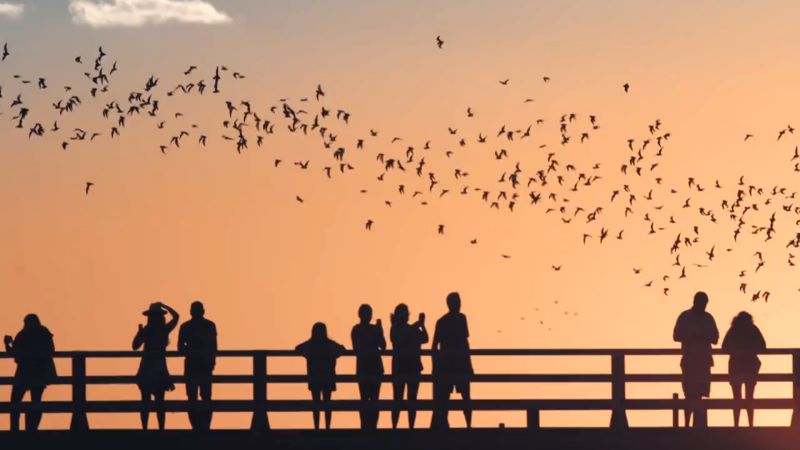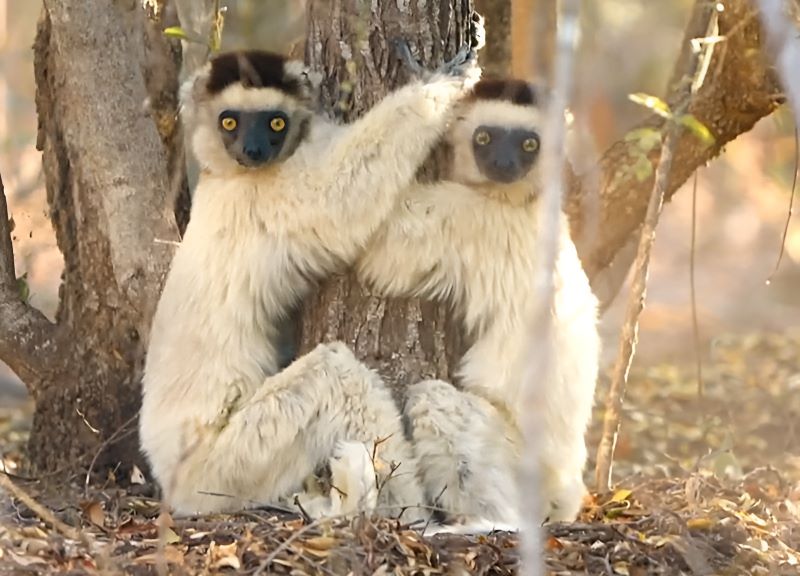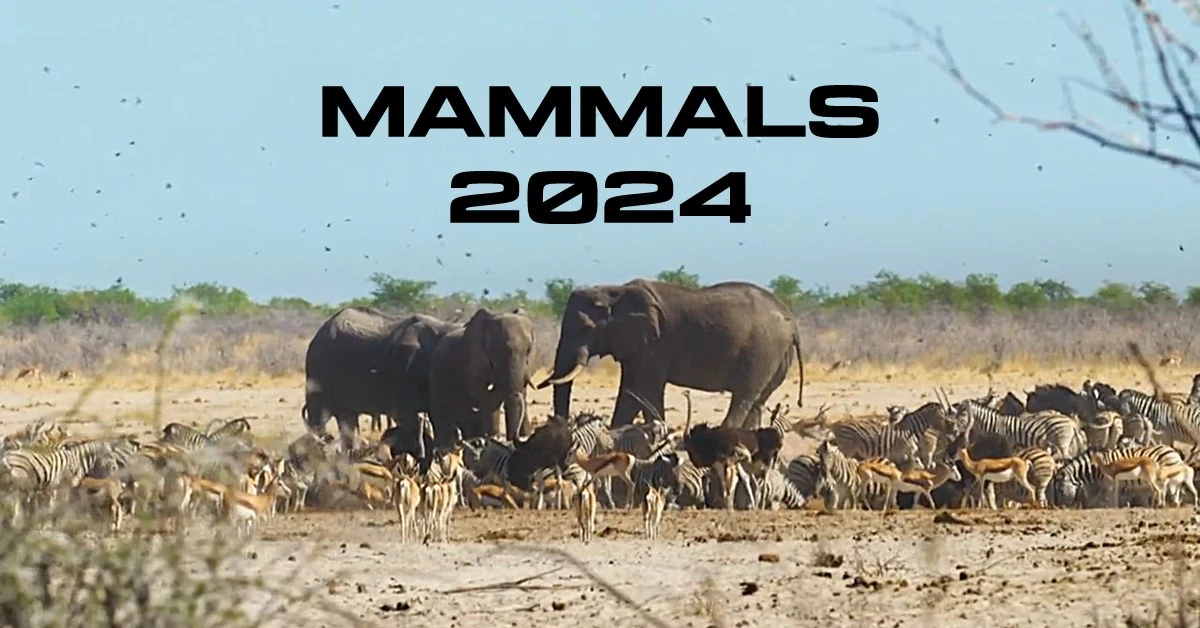Mammals 2024 is one of the best nature documentary educative TV series on mammalian behaviour by naturalist Sir David Attenborough
Mammals (2024) narrated by my all-time favourite biologist Sir David Attenborough is a documentary TV series dedicated to us, mammals. It’s a fascinating, as usual, series comprised of 6 episodes that focus on mammalian behaviour and their struggle to changing weather patterns.
As a lover of nature and concerned person about the climate change effects on nature and animal habitats, I am completely surprised to see how mammals behave in their journey of survival. The following are some instances by which I am dazzled and could not help but write about what fascinates me among many other fascinating mammalian adaptive behaviours.
Even though humans are directly responsible for decreasing mammal populations and decreasing forest areas and polluting the ocean, what Sir David Attenborough did through the series is extraordinary.
Its in-depth analysis of mammals from deep inside the ocean to under the ice and above the ground, in broad daylight to blinding dark the series delivers the best shots of its subjects with the help of advanced technology.
Mammalian behaviours for survival
The first episode of Mammals 2024 shows how nocturnal mammals can survive in the dark when others are asleep. It shows how nocturnal mammals like leopard, Fennec fox of the Sahara, Etruscan shrew, armadillo, Tanzanian spotted hyenas, Damaraland mole rats of the Kalahari Desert
In their colonies of Damaraland mole, the only queen breeds when the all the rest, male or female are workers, they dig for food. They collect the foods and store them in an empty hole used as a larder for the dry season when digging them becomes difficult.
Bulldog bats/bats
The bulldog bats of Venezuela have a sixth sense that enables them to see in the dark, echolocation. With a series of loud and clear calls and by listening to the echoes they are able to create a mental map of their surroundings which helps them navigate in the total darkness, which they use to catch fish.
Attenborough says the bats were almost certainly flying in the sky when dinosaurs became extinct. now nearly a quarter of all mammal species are bats. The greatest congregation of bats takes place in August under the Congress Avenue Bridge in Austen, Texas where spectators wait the sun to set and witness the spectacle of 1.5 million Mexican free-tailed bats. The number of bats outnumbers the people of Austen, says Attenborough.

Good to know that coyotes altered their habit from daylight to night to avoid human contact and 4000 of live them in Chicago.
Singapore’s otter family
Marvellous to know how beautifully Singapore’s otter family of Victoria Falls roam across the city; Zimbabwe’s elephants learned new adaptive behaviours to stay away from the daylight hours. They return to the street as the night becomes quiet in search of food.
Hippo’s struggle for survival
However, according to Attenborough, 70% of the freshwater is used in agriculture globally where around 4000 litres of water is needed to produce just one 1kg of rice. The Katuma River of Tanzania has been converted to irrigate rice fields.
Hippos get stuck in the ever-shrinking pools in Tanzania. With every day they pass, things become difficult for them as agriculture claims more and more water, and the hippo habitats are shrinking making it difficult for them to survive.
One thing that utterly left me speechless is to witness how the wild boar and wolfs chose to live in the Golan Heights fields full of unexploded mines, near the frontier of Israel and Syria. There in 2000 fields lie the remnants of a six-day war for 50 years.
The wolves live there undisturbed by humans. They get out of the enclosure at night and return to the it at afterwards and live peacefully. Their intense sense of smell helps them avoid explosive materials in land the mine. There inside the mine, they remain safe from the human hunters
Over the 50 years, most wildlife has declined on average almost 70%.
American buffaloes fight for dominance during breeding season. The winner fathers the most calves.
Today, measured by wildness less than 6% of mammals in wilds are truly wild. The other 94% are our livestock, pets, and ourselves describes Attenborough.
Impact of tourism on wildlife
It is very sad, and also surprising to learn that African wildlife is suffering from excessive human presence in their habitats.
With 69 million of visitors each year to the protected sites in Africa, parts of the wilderness are becoming overcrowded. Heartbreaking to see how tourism is responsible for the decreasing population of cheetahs. “We are in danger of loving these cheetahs in death”, says Attenborough. Because they cannot properly hunt among so many vehicles.
Also, as the seas became the highways, the sea traffic are having a huge impact on sea mammals. An estimated 2000 whales die of collision with ships every year. Blue whales are the high risk.
Dolphins/water
To hunt fish, dolphins churn up the water by biting tails creating a muddy barrier. Trapped inside the muddy water fish leap into their mouth in the frenzy of escaping. However, mysteriously Florida dolphins use different shapes to hunt fish. Moreover, why dolphins use different shapes to hunt remains a mystery, says Attenborough.
Orcas hunt humpback whale babies in the Antarctic. When they kidnap the babies, they mimic their mother’s behaviour by putting it on the orca’s back as if being carried by her mother. However, though young and naive the calf goes with them willingly with them without realising the danger.
During their migration from shoal to the Antarctic orca kill as many as five humpback whale calves a day.
False killer whales and bottlenose dolphins maintain a strong friendship for their survival. They team up not only to play but to hunt. The false killers go under the school of kahawai fish and help dolphins feed while they themselves wait for the bigger catches that are attracted by the commotion: kingfish.
They just use kahawai as bait in cooperation with the dolphins. Even if all the false killer whales cannot make a catch, they will not go hungry because surprisingly the successful hunters share their food with those that failed make a catch.
Sperm whales spend just 7% of their lives asleep. A baby sperm whale remains 16 months in its mother’s womb and consumes 100 litres to 300000 litres of calories every day for the next two years.
However, the human-made catastrophe takes a toll on them very highly. The whales are entangled in the so-called “ghost nets”, the fishing lines lost in the ocean which is enough to reach the Moon and back together with 20 million traps and 14 billion hooks, cuts their bodies and the nets floats prevent them from diving, and a slow and agonizing death.
Cold
Wolverine behaviour
A male wolverine leaves food in the middle of nowhere for his female partner as a gift. The reason behind his caring behaviour and delivery of the gifts is that she needs it more than him to raise a family, while she lives and nurtures baby two mitre below the surface.
Surprisingly, 90 % of mammal males take or no part in raising their young, but the exceptional fatherly devotion of wolverine helps raise family in the cold.
Brown bats
Brown Bats in cold regions sleep for 6 months to avoid the harsh weather of the winter. In order to pass six months with their fat, they change their bodily functions in a remarkable way. Their heartbeat drops to 10 every minute while inhale only twice in an hour. Their body temperature in dim winter is just above freezing level.
The entire colony of brow bats can hold their life on hold.
The solitary male bats who did not get a chance to mate are seemed to shiver themselves to wake themselves up. It rewarms itself by vibrating it muscles. The few males who fail to mate with a female partner before hibernation they usually wake themselves up to mate in the middle of the cold. By searching for a female in the female cluster, carefully he mates with one before he leaves quietly and goes back to sleep.
The females who mated before the winter do not fertilize the sperm, they just stock it to do so after hibernation.
The arctic foxes
The arctic foxes make strong alliances with polar bears and wait for the sea to freeze when they will scavenge on bear’s leftovers.
However, due to climate change, when the sea freezes later than the usual time, some foxes die while other surviving hungry foxes feed on the carcasses of their own species. But as David Attenborough says, as the global temperature continues to rise, only time will tell if they will be able to survive in the warming world.
Heat weather
This episode reveals how mammals cope with heath. The mammals manage to survive in the cauldron of heat in a remarkable way, especially bearded Capuchino in the Serra da Capybara in Brazil, a world of harsh dry forests where the dry season lasts up to seven months. They meet the need for water in the scorching heat by drawing water with their tails from the tree trunk.
Australia is the driest continent on earth with a million square miles of desert where water is almost impossible to find.

Sifaka lemurs of Madagascar have a clever way of cooling themselves down. In the scorching hear of 45 DC they search for the right tree. Once found one they hug the tree, especially the Salvadora tree trunk that draws water from deep below ground. With the rise of heat, this kind of behaviour become more and more common.
Echidna
There in the dry eucalyptus forest of Australia live echidnas, the only mammal to reproduce by laying eggs. It has a very unusual way of mating. An echidna female is usually followed by up to ten echidna males vying for her attention. Known as ‘love train’ it goes on for weeks. However, only one male echidna gets a chance to mate.
Echidnas manage to survive the Australian bushfire by going underground. Their extraordinary survival skills help them survive Australian bushfires, when between 2019 and 2020 the continent experienced the most catastrophic bushfire that devastated 100,000 sq. kilometre of forest, larger than the UK.
In such incidents, echidnas go to deep sleep known as torpor while they take a breath every three minutes. This way they live days without food and water. With the rise of global temperature, bushfires become far more frequent and intense and the survival of echidna is becoming more crucial.
Antelope squirrels of Arizona desert
While echidnas go underground to avoid the heat, Harris’s antelope squirrels of the Arizona desert do just the opposite. To avoid competition from other mammals, they hunt food even in the 80⁰ heat. To minimize its body temperature, the squirrel does heat-dump by spreading his body against the sand in the shade of a tree. The process helps it outcompete its predator, a rattlesnake, that cannot tolerate heat.
The Giraffes of Hoanib Valley in Skeleton Coast of Namibia do not overheat because of their special blood vessels which release body heat as temperature rises.
Vampire bats
In Trinidad’s white-winged vampire bats detect the heat that animals produce and use it to guide them to a drink of the blood of their victim. It bites its victim carefully and releases anticoagulant saliva that contains draculin that helps blood flow freely and unavoidably.
The fact that blood is not that nutritious it has to dink nearly half of its body weight that makes it impossible to fly. But its kidneys quickly extract water from its meal to make it able to fly.
The baboons on the banks of the River Nile use sun heat for their survival. They eat flying termites. With the help of hungry lizards, they steal crocodile eggs.
Forest
Chimpanzees of Equatorial Africa feed on mangabey monkeys. Bobcats catch salmon fish in the stream in the forest of North America.
In forests where fallen temperature causes thick layers of snow, animals have to survive on the vegetation lying beneath the snow. But the Siberian squirrels glide from trees to trees to feed themselves.
Interdependency between plants and mammals is impressive in Central Africa.
The straw-coloured fruit bats travel across the continent to visit one small patch of forest in Zambia when fruit trees are ripening. In the dusk, they head out in search of fruits. Some 10 million bats take to the air making the largest and densest concentration of mammals on the planet. This concentration can consume up to 5000 tons of fruits every night and within a period of three weeks, they distribute over a billion of seeds enough to plant an entire forest.
But because of the cutting down of trees for farming and building houses the bats and forest are facing threats. The delicate natural balance is at risk.
The howler monkey’s new alpha male in Costa Rica kills the infants of the previous alpha males to produce to new generation.
It is surprising to see the rise of temperature help spread cactus-like euphoria trees in Uganda. And also some terrestrial animals. Lions of this area clime these cactus-like trees due to their cooler state and instead of going hunting directly on the ground they climb up the trees for a better view of the preys, which also help their presence unnoticeable to their preys.
Forgetting that their hunters are even there they become prey as they come closer to the trees.
Conclusion
As he says, there are more than 6000 species of mammals on earth but their fate lies in the hands of just one: Us, the humans. If we make the right decision, we can safeguard the future not just our fellow mammals but all life on Earth.
